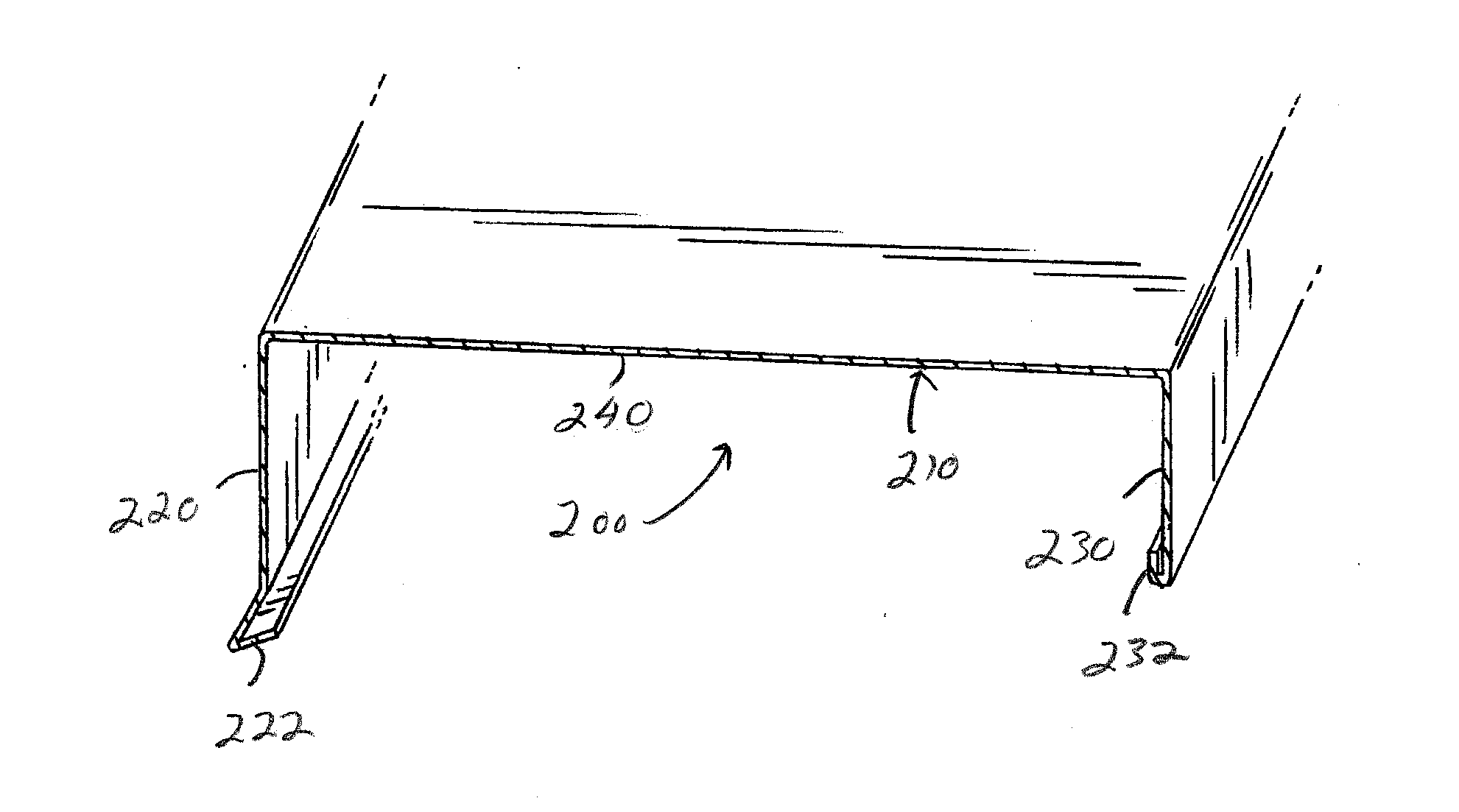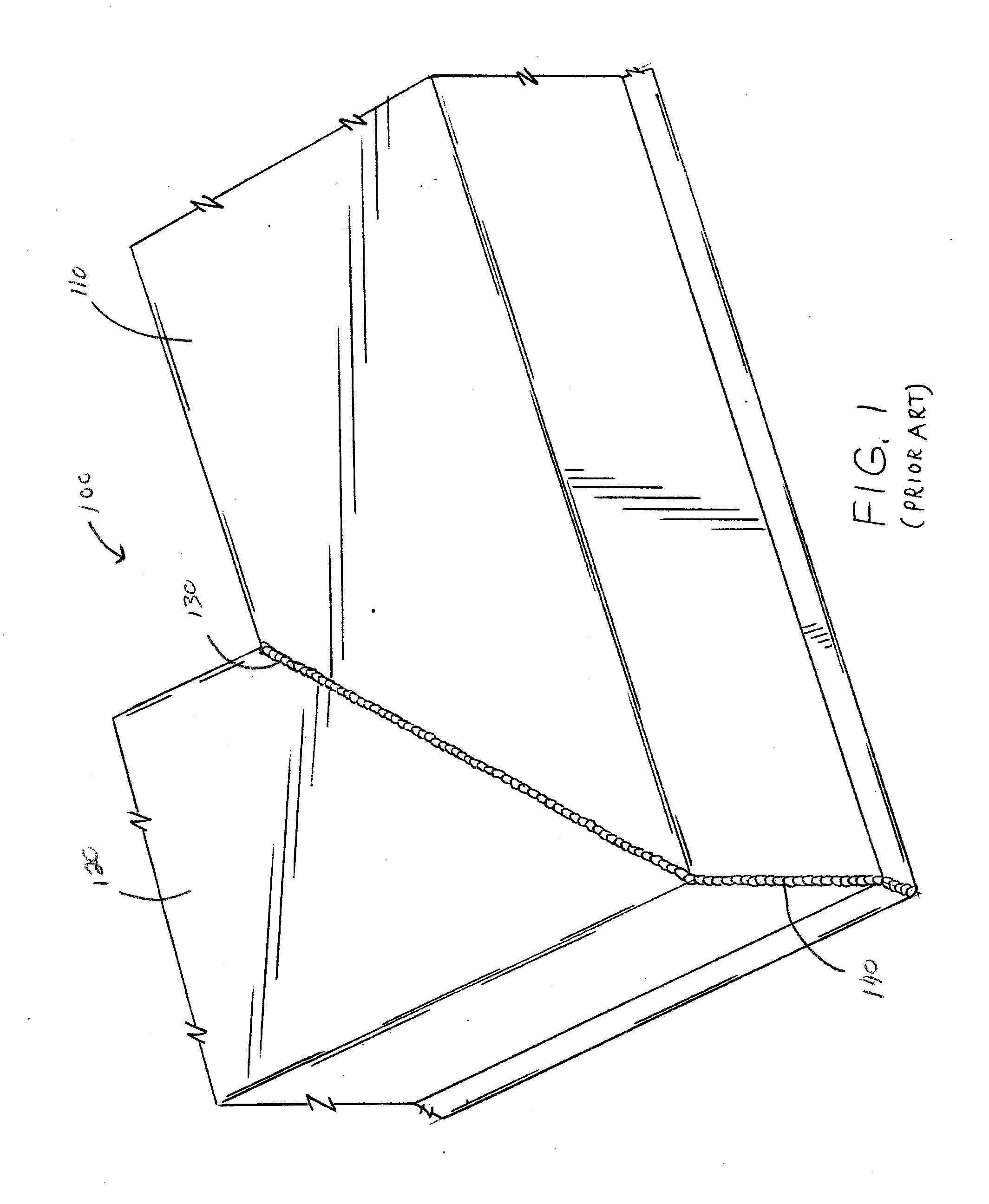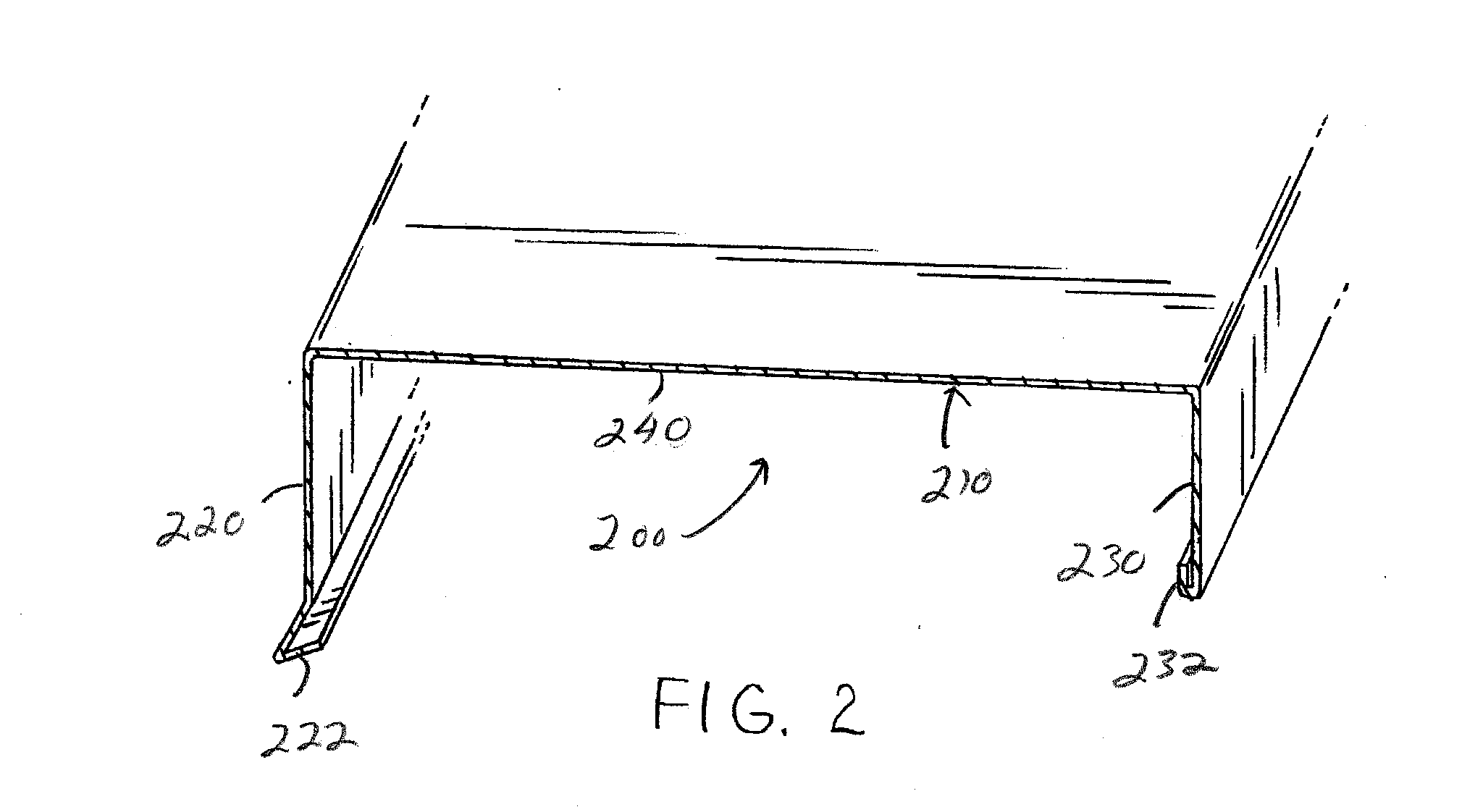Non-welded coping caps and transitions
a technology of transitions and coping caps, applied in the direction of paper/cardboard containers, transportation and packaging, adhesive types, etc., can solve the problems of difficulty in prefinished metal coping, lack of an equally exceptional method of providing coping system continuity, and high cost and relative poor performance with respect, so as to improve the coping cap and/or transition, improve the effect of coping system continuity, and adequate strength and durability of sheet joints
- Summary
- Abstract
- Description
- Claims
- Application Information
AI Technical Summary
Benefits of technology
Problems solved by technology
Method used
Image
Examples
Embodiment Construction
[0053]Referring now to the drawings, wherein the showings are for the purpose of illustrating preferred embodiments of the invention only and not for the purpose of limiting same, FIGS. 2-12 illustrate non-limiting configurations of a novel coping cap and a method for forming the novel coping cap in accordance with the present invention. The improved coping cap and / or transition does not require a weld or solder, thus the adverse problems associated with coping caps and / or transitions that include a weld or sold are overcome. As illustrated in FIG. 1, a prior art coping cap 100 is shown having a welded or solder seam 130, 140 on the exterior surface of the coping cap. The coping cap is formed of two pieces of material 110, 120 that are connected together by the selected or solder seam. The welded or solder seam 130 is used to weld together the exterior bottom portion of the coping cap and the welded or solder seam 140 is used to weld together the exterior front edge of the coping ca...
PUM
| Property | Measurement | Unit |
|---|---|---|
| angle | aaaaa | aaaaa |
| lengths | aaaaa | aaaaa |
| lengths | aaaaa | aaaaa |
Abstract
Description
Claims
Application Information
 Login to View More
Login to View More - R&D
- Intellectual Property
- Life Sciences
- Materials
- Tech Scout
- Unparalleled Data Quality
- Higher Quality Content
- 60% Fewer Hallucinations
Browse by: Latest US Patents, China's latest patents, Technical Efficacy Thesaurus, Application Domain, Technology Topic, Popular Technical Reports.
© 2025 PatSnap. All rights reserved.Legal|Privacy policy|Modern Slavery Act Transparency Statement|Sitemap|About US| Contact US: help@patsnap.com



